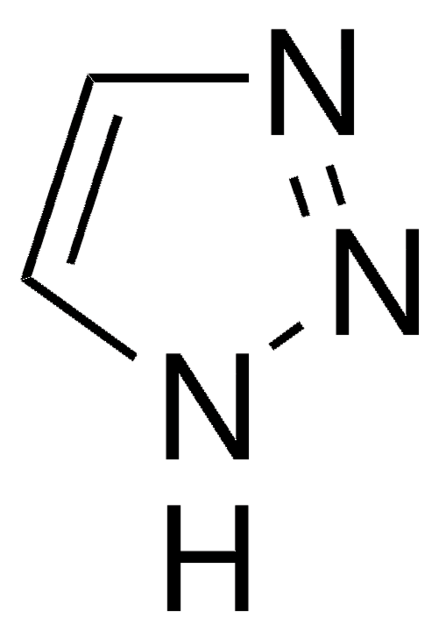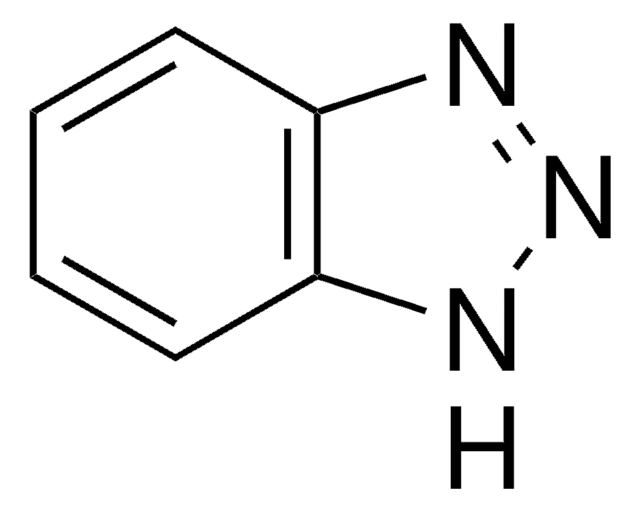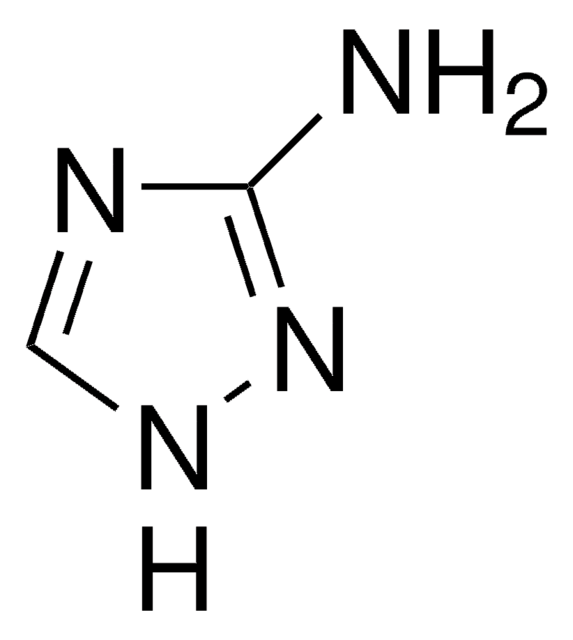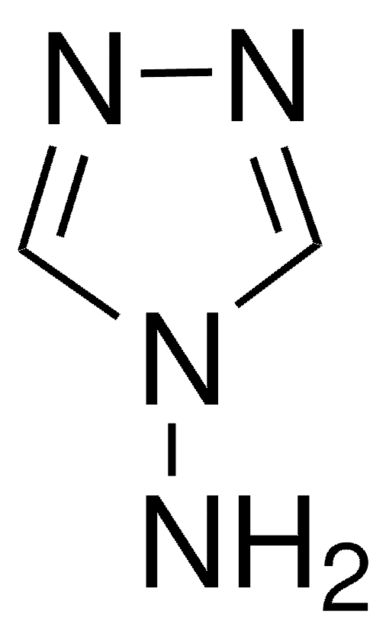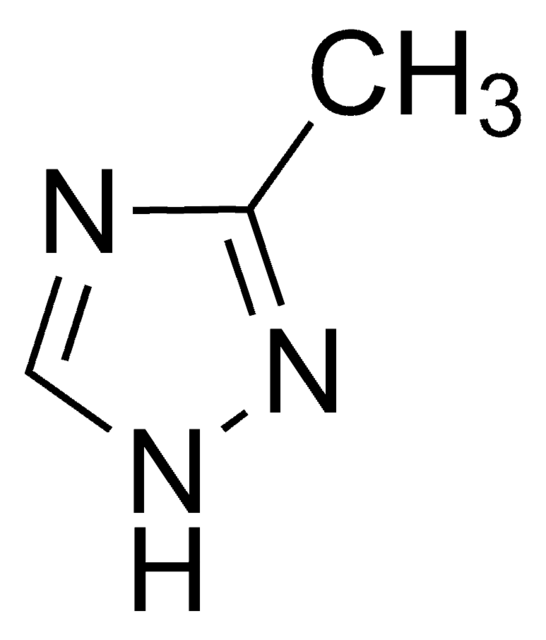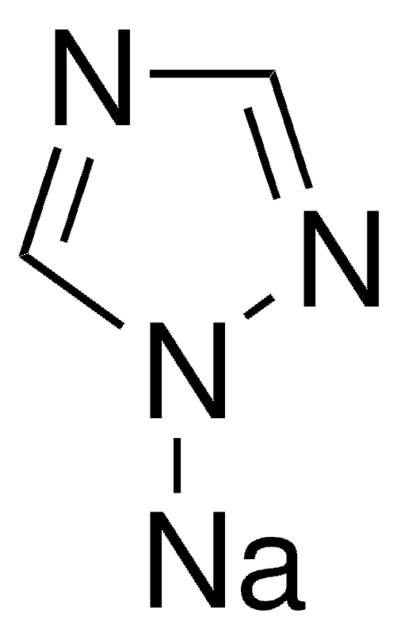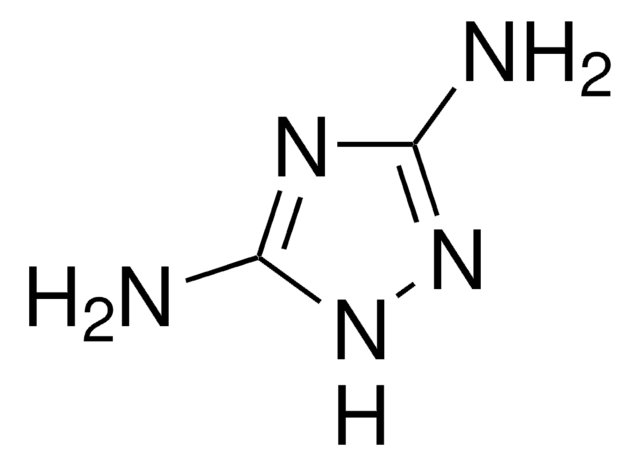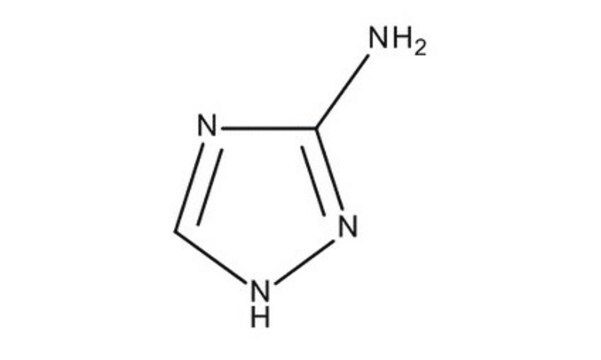8.08388
1,2,4-Triazole
for synthesis
Synonym(e):
1,2,4-Triazole
About This Item
Empfohlene Produkte
Qualitätsniveau
Assay
≥98.0% (GC)
Form
solid
Wirksamkeit
1650 mg/kg LD50, oral (Rat)
3129-4200 mg/kg LD50, skin (Rabbit)
pH-Wert
8 (20 °C, 10 g/L in H2O)
bp
259-261 °C/1013 hPa
mp (Schmelzpunkt)
119-122 °C
Dichte
1.15 g/cm3 at 130 °C
Schüttdichte
550 kg/m3
Lagertemp.
2-30°C
InChI
1S/C2H3N3/c1-3-2-5-4-1/h1-2H,(H,3,4,5)
InChIKey
NSPMIYGKQJPBQR-UHFFFAOYSA-N
Anwendung
- Chemistry of 1, 2, 4-triazole: a review article: This comprehensive review explores the broad applications of 1,2,4-triazole in pharmaceuticals, demonstrating its role in enhancing antibacterial, antifungal, and antioxidant properties (Shneine et al., 2016).
- Combination of 1, 2, 3-triazole and 1, 2, 4-triazole frameworks for new high-energy and low-sensitivity compounds: Discusses the synthesis of energetic materials combining 1,2,4-triazole with other high-energy frameworks, aiming to enhance performance and safety (Yao et al., 2021).
- 1, 3, 4-Oxadiazole, 1, 3, 4-thiadiazole and 1, 2, 4-triazole derivatives as potential antibacterial agents: Examines derivatives of 1,2,4-triazole for potential use in antibacterial treatments, reflecting on their pharmacological importance (Othman et al., 2019).
- Recent developments on 1, 2, 4-triazole nucleus in anticancer compounds: a review: Reviews the incorporation of the 1,2,4-triazole nucleus in various anticancer compounds, showcasing the therapeutic potential of this moiety (Kaur et al., 2016).
Hinweis zur Analyse
Schmelzbereich (unterer Wert): ≥ 117 °C
Schmelzbereich (oberer Wert): ≤ 121 °C
Identität (IR): entspricht
Signalwort
Danger
H-Sätze
Gefahreneinstufungen
Acute Tox. 4 Oral - Eye Irrit. 2 - Repr. 1B
Lagerklassenschlüssel
6.1C - Combustible acute toxic Cat.3 / toxic compounds or compounds which causing chronic effects
WGK
WGK 2
Flammpunkt (°F)
338.0 °F
Flammpunkt (°C)
170 °C
Analysenzertifikate (COA)
Suchen Sie nach Analysenzertifikate (COA), indem Sie die Lot-/Chargennummer des Produkts eingeben. Lot- und Chargennummern sind auf dem Produktetikett hinter den Wörtern ‘Lot’ oder ‘Batch’ (Lot oder Charge) zu finden.
Besitzen Sie dieses Produkt bereits?
In der Dokumentenbibliothek finden Sie die Dokumentation zu den Produkten, die Sie kürzlich erworben haben.
Unser Team von Wissenschaftlern verfügt über Erfahrung in allen Forschungsbereichen einschließlich Life Science, Materialwissenschaften, chemischer Synthese, Chromatographie, Analytik und vielen mehr..
Setzen Sie sich mit dem technischen Dienst in Verbindung.
